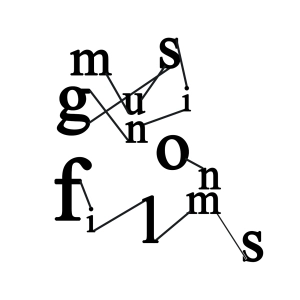
Screening with Q&A with director Yiannis Koufonikos
Rogatsia has been a long time in the making for Koufonikos. Shot over four years from 2005-09, and after several years of editing, it is now in a finished form of sorts. During the Q&A, he mentioned that he intends to develop it further into an interactive documentary, presenting the 20+ hours of material shot in a more malleable, online form.
Learning about Greek folk culture is interesting, yet also not the type of thing I would usually be interested in. However, there is also a sense that there is nothing that compares to actually being there. The ancient instruments and men in white tights stands as anachronous in the face of modern cars, and people standing outside their houses in plastic coats. I’ve seen traditional folk costumes and music parade down the street in Salzburg, yet never in Greece. Koufonikos said that the people featured in the documentary seemed to enjoy it the most; it took his grader a couple of viewings for it to grow on him. You can understand why. To live and breathe among these people is a different experience entirely. But there’s something interesting about a New Year celebration so far apart from ours: children beg to drink wine, but there’s no drunken make-out sessions complete with fireworks and champagne (or Jools Holland).
In presenting his ethnographic study as an audio-visual artefact, it brings to life the traditional costumes and the music in a way prose would not be able to capture. Shot on handheld digital video, the detriments of this become most apparent during sequences with strong light sources – we see light streams in the church, and in another scene flares from the sun light up dust from the lens and in some ways distracts. Koufonikos responded to my question, saying that he was willing to sacrifice the image in order to capture a greater objectivity.
Koufonikos acknowledges his presence within the documentary: a child asks why he is being filmed, and a man wishes him to make the best documentary he can. There is no theatricality, but a sense of capturing reality as it happens. To see an ethnographic documentary like this feels unusual in the present day; where I think of a documentary capturing a culture in an ‘objective’ light, I think of works of the 1920s and 30s, like Man of Aran (1934) and Nanook of the North (1922), but Koufonikos told me that many parts of the former were staged. Other recent works such as The Pearl Button (2015) depend upon beautiful cinematography, rather than this more restrained, minimalistic perspective.
Some of the featured subjects present a sense of character, however it is lacking is context. Zourna went through a cultural resurgence during the 1970s, we are told: however besides a few sentences, this isn’t explored. A greater depth into why this tradition went away and why it came back – and its positive aspects of raising money to build a church – would have been appreciated.

